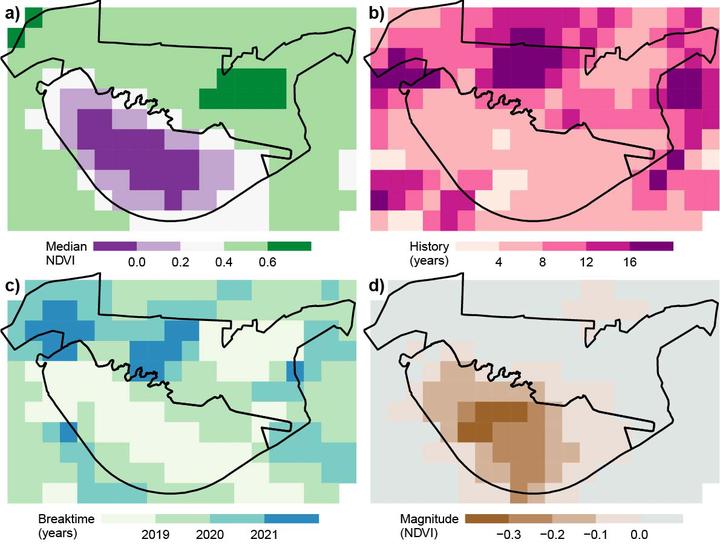Disturbance and vegetational structure in an urban forest of Indian Siwaliks: an ecological assessment
 Image credit: Authors
Image credit: Authors
Abstract
Urban forests face multiple human-mediated pressures leading to compromised ecosystem structure and functioning. Therefore, understanding ecosystem structure in response to ongoing pressures is crucial for sustaining ecological integrity and human well-being. We aim to assess the disturbance and its effects on the vegetation structure of urban forests in Chandigarh using a combination of remote sensing techniques and vegetation surveys. The disturbance was evaluated as a change in NDVI (Normalised Difference Vegetation Index) from 2001 to 2021 by applying the BFAST (Breaks For Additive Season and Trend) algorithm to the MODIS satellite imagery data. A vegetation survey was conducted to compare the species composition, taxonomic and phylogenetic diversity as measures of forest vegetational structure. While signals of disturbance were evident, the changes in vegetation structure were not well established from our study. Further, this analysis indicated no significant differences in vegetation composition due to disturbance (F1,12 = 0.91, p = 0.575). However, the phylogenetic diversity was substantially lower for disturbed plots than undisturbed plots, though the taxonomic diversity was similar among the disturbed and undisturbed plots. Our results confirmed that disturbance effects are more prominent on the phylogenetic than taxonomic diversity. These findings can be considered early signals of disturbance and its impact on the vegetation structure of urban forests and contribute to the knowledge base on urban ecosystems. Our study has implications for facilitating evidence-based decision-making and the development of sustainable management strategies for urban forest ecosystems.